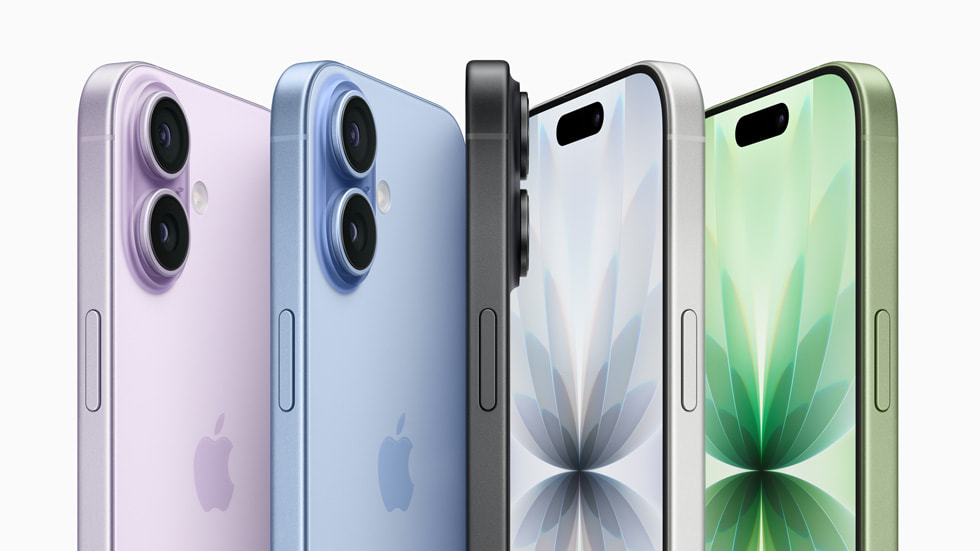It took seven generations for Apple to give the iPhone a real redesign. The iPhone 17 series, especially the Pro and Pro Max, introduces a new camera plateau layout that finally sets it apart from years of lookalike predecessors.

The changes aren’t just on the outside. There’s plenty of new happening under the hood, too.
While the standard iPhone 17 doesn’t look much different from its predecessor, it probably brings the most meaningful set of upgrades. The kind that finally fixes a lot of small annoyances and smooths out the rough edges from last year’s model. So if you are considering an upgrade, here’s why should get iPhone 17 over iPhone 16.
1. Display that refreshes at 120Hz, finally!

iPhone 17
The most noticeable difference between the iPhone 16 and iPhone 17 is the display. The iPhone 17 finally moves to an LTPO Super Retina XDR OLED panel, which has so far been reserved for Pro models until now. The screen can now refresh between 1-120Hz and also supports Always on Display.
Apple has increased the iPhone 17’s screen size slightly to 6.3 inches (vs 6.1 inches on iPhone 16), and the bezels have been reduced for a higher 90.1% screen-to-body ratio. The difference isn’t dramatic but noticeable when you hold the phones side by side.
The peak brightness has increased from 2000 nits (HBM) on the iPhone 16 to 3000 nits peak on the iPhone 17. Apple has also added an anti-reflective coating that cuts glare. Combined with the new Ceramic Shield 2 protection, which Apple claims has a higher Mohs hardness level (from 4 to 5), the display should be more resistant to scratches.
Please Note: When you buy something using the links in our articles, we may earn a small commission at no cost to you.
2. Camera upgrades
Apple didn’t change the look of the dual-camera setup, but what’s inside has improved. The iPhone 17 now carries two 48-megapixel sensors, one wide and one ultrawide, compared to the iPhone 16’s 48MP + 12MP pairing.
The difference here isn’t just numbers. The ultrawide camera on the iPhone 17 uses a larger 1/2.55″ sensor, which should technically improve light capture and reduce noise in darker scenes.
More interesting is the 18MP square sensor for selfies. Apple calls it the Center Stage camera, which can automatically switch between horizontal and vertical framing for selfies and group shots without physically rotating the phone. The phone can shoot 4K up to 60fps from both the front and rear cameras.
3. A19 chip and subtle performance gains
Under the hood, the phone is powered by Apple’s A19 chip. It is built on the same 3nm process as the A18, but the core speeds have increased slightly to give a performance edge.
The software side is handled by iOS 26, which introduces the new Liquid Glass design language along with Apple Intelligence services like Live Translation and Call Screening.
4. Design
At a glance, the two phones look almost identical. Both have flat aluminum frames, glossy glass backs, and the same minimalistic look Apple refuses to abandon. But the iPhone 17 is slightly taller, 0.2mm thicker, and 7 grams heavier at 177g. The new device is also available in three new shades, Mist Blue, Sage, and Lavender, except the usual Black and White.
5. Battery and charging improvements
Battery upgrades are often understated, and that’s the case here, too. The iPhone 17 packs a 3692mAh battery, up from 3561mAh in the iPhone 16. That’s not huge, something nonetheless.
Charging, however, is where the iPhone 17 feels more modern. It now supports PD3.2 (with AVS) charging, which can reportedly juice it to 50% charge in 20 minutes. Wireless charging also reaches 25W for both MagSafe and Qi2 standards, offering 50% in about 30 minutes.
The iPhone 16’s wireless charging speeds topped out at 15W for Qi2, which felt slow by 2024 standards. The iPhone 17’s improvements bring it closer to the charging experience Android phones have offered for years.
6. Connectivity and ecosystem
On the connectivity front, the iPhone 17 has quietly moved to Bluetooth 6.0. Both support Wi-Fi 7, but Apple expands location support in the iPhone 17 with NavIC compatibility. The rest of the connectivity suite, including dual eSIM support, UWB (generation 2), and satellite messaging, remains the same.
7. Pricing and storage
Apple dropped the 128GB base variant this year. The iPhone 17 starts at 256GB with 8GB RAM, while the iPhone 16 began at 128GB. However, the good thing is that it starts at the same price as last year’s model. That is $799.
8. So, Should You Upgrade?
If you already own an iPhone 16, upgrading to the 17 might not be essential. But if you’re coming from an older model, or are deciding between the 16 and 17 today, the choice is clear. The iPhone 17 simply aligns better with modern expectations: smoother screen, stronger glass, better cameras, and faster charging. And with the same starting price but more storage, it’s a no-brainer for anyone who wants a new iPhone.
For more daily updates, please visit our News Section.
Stay ahead in tech! Join our Telegram community and sign up for our daily newsletter of top stories! 💡








